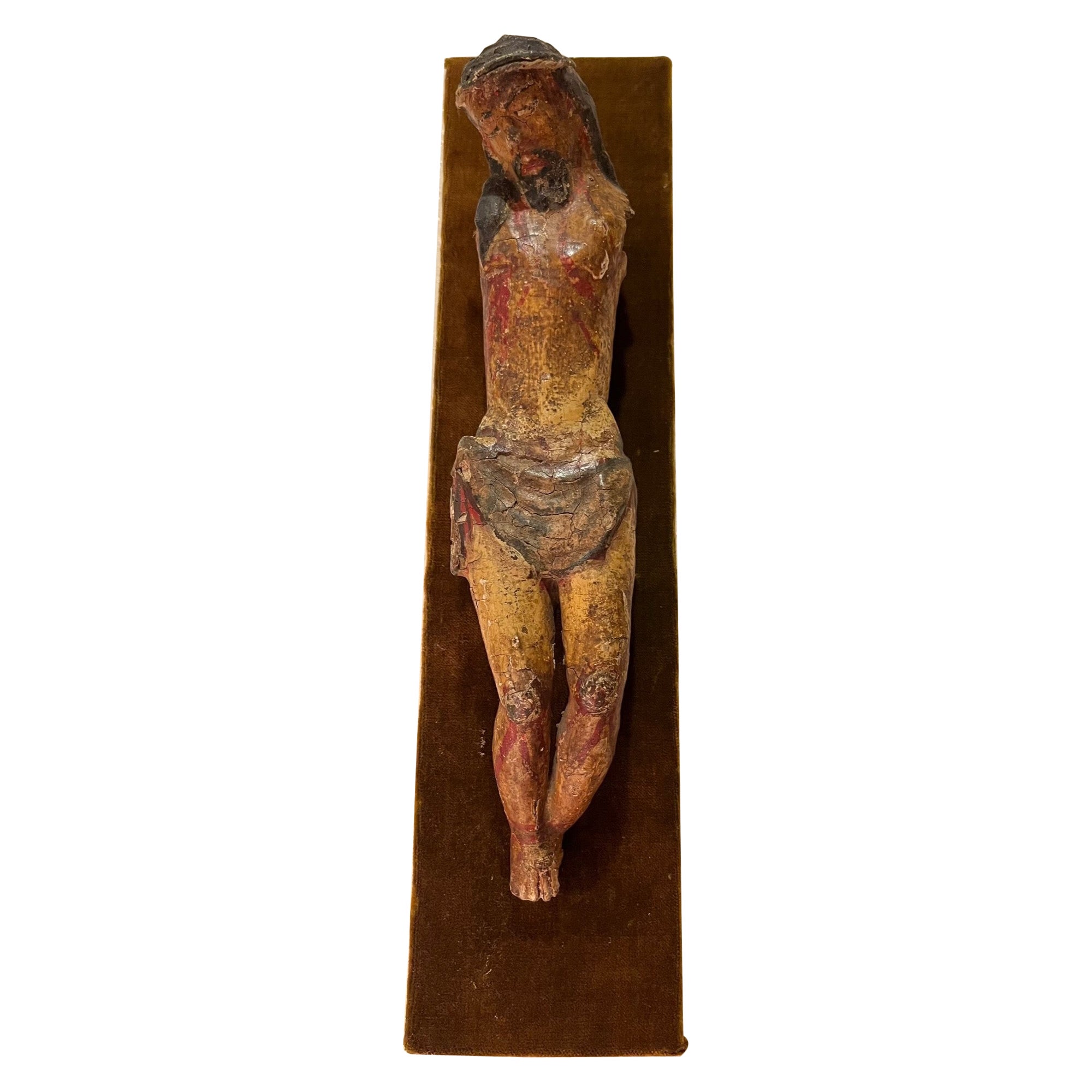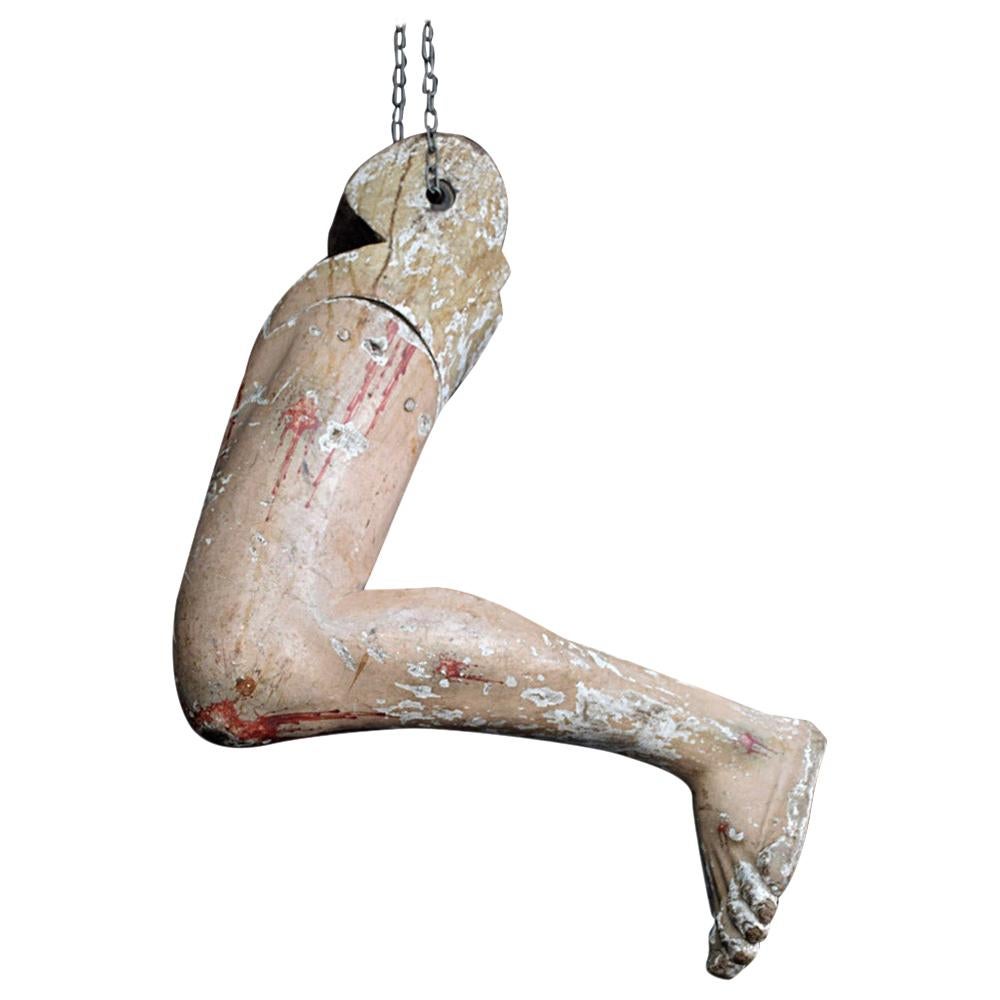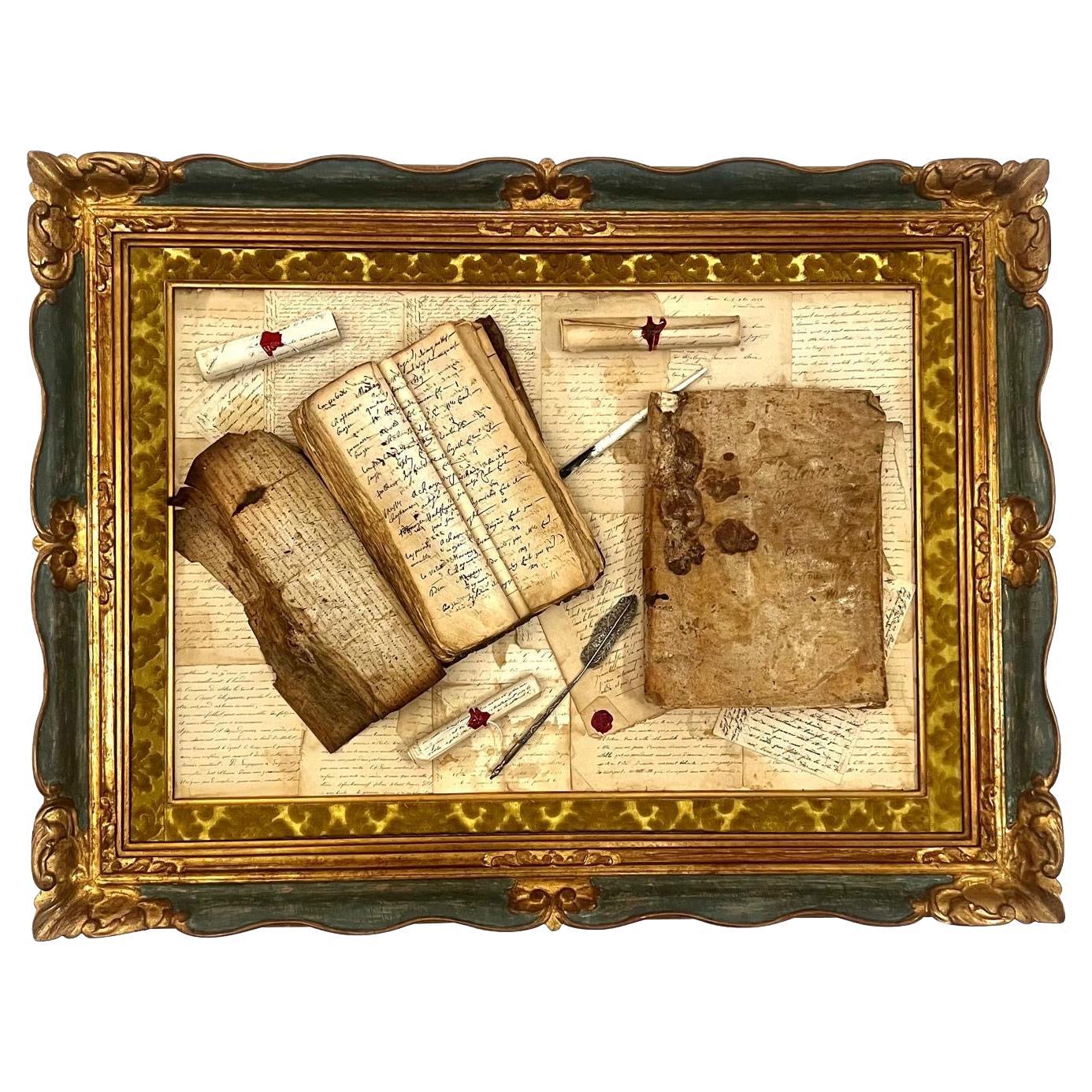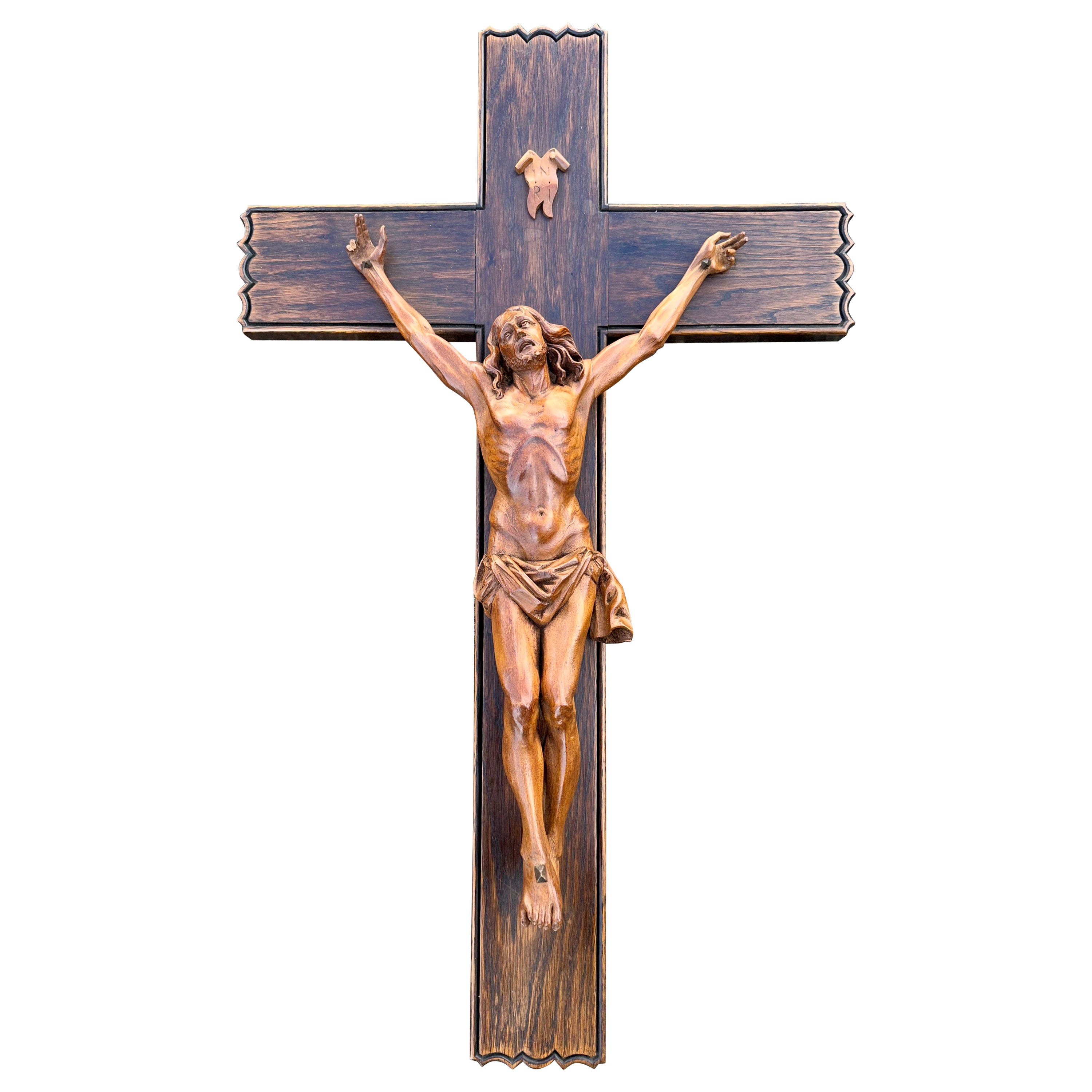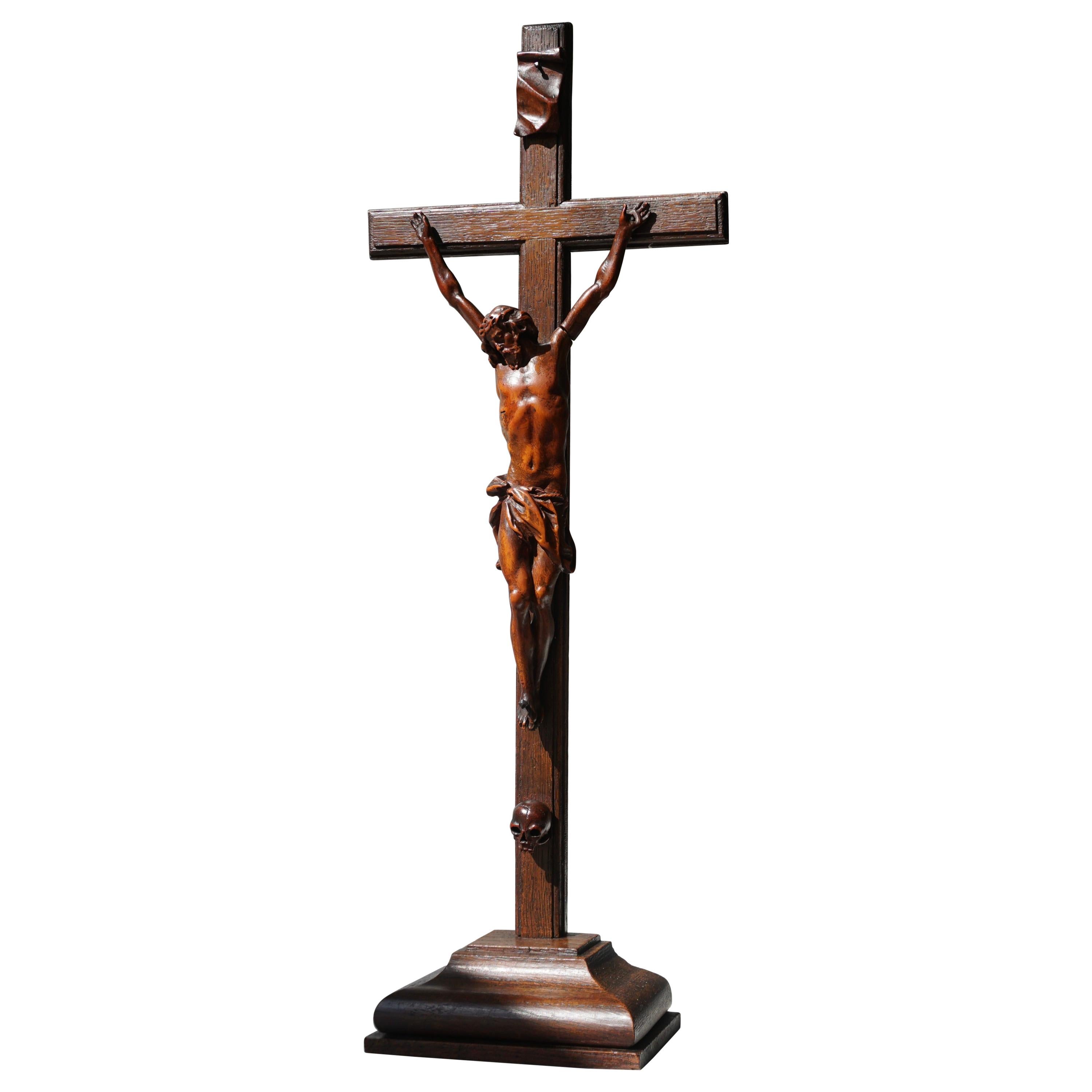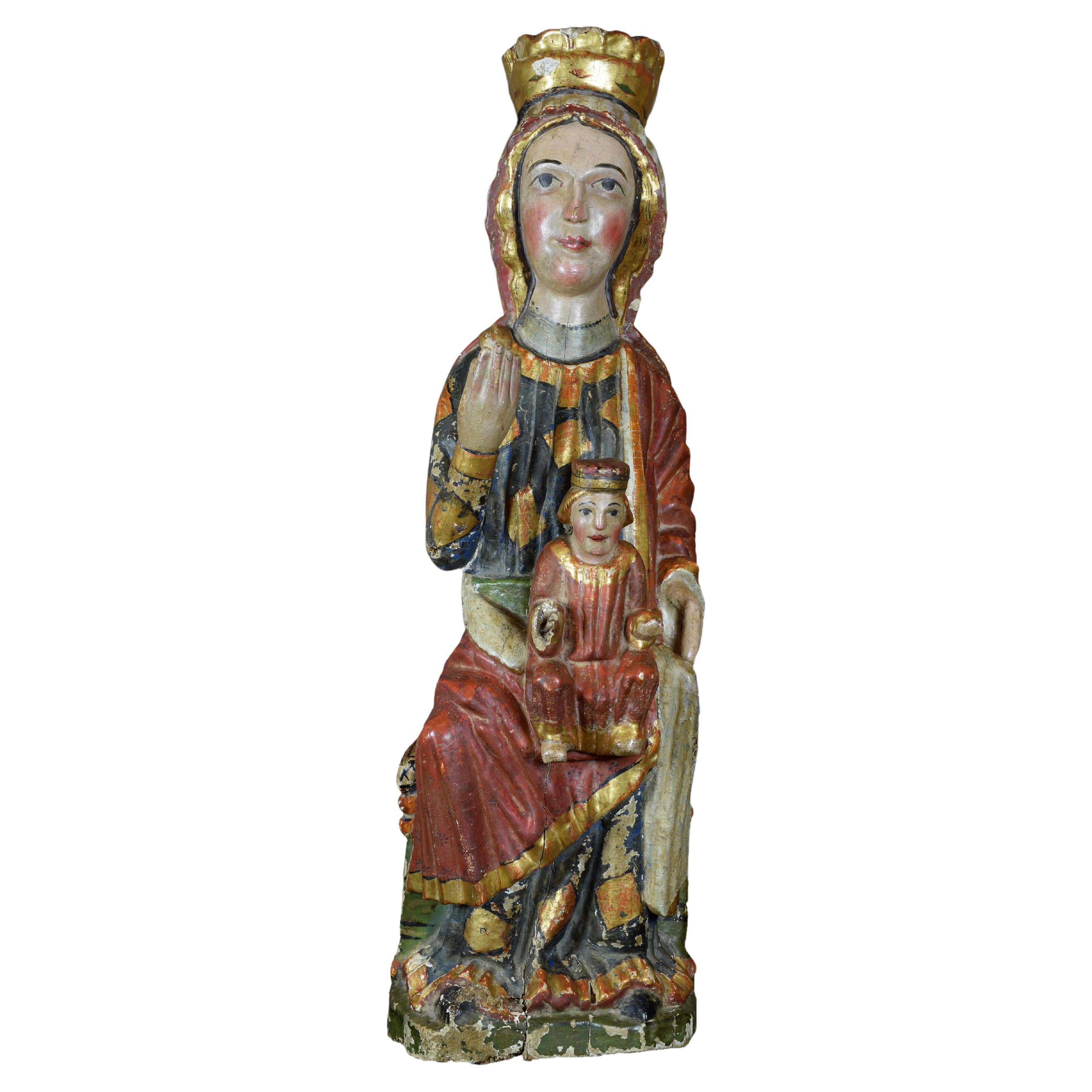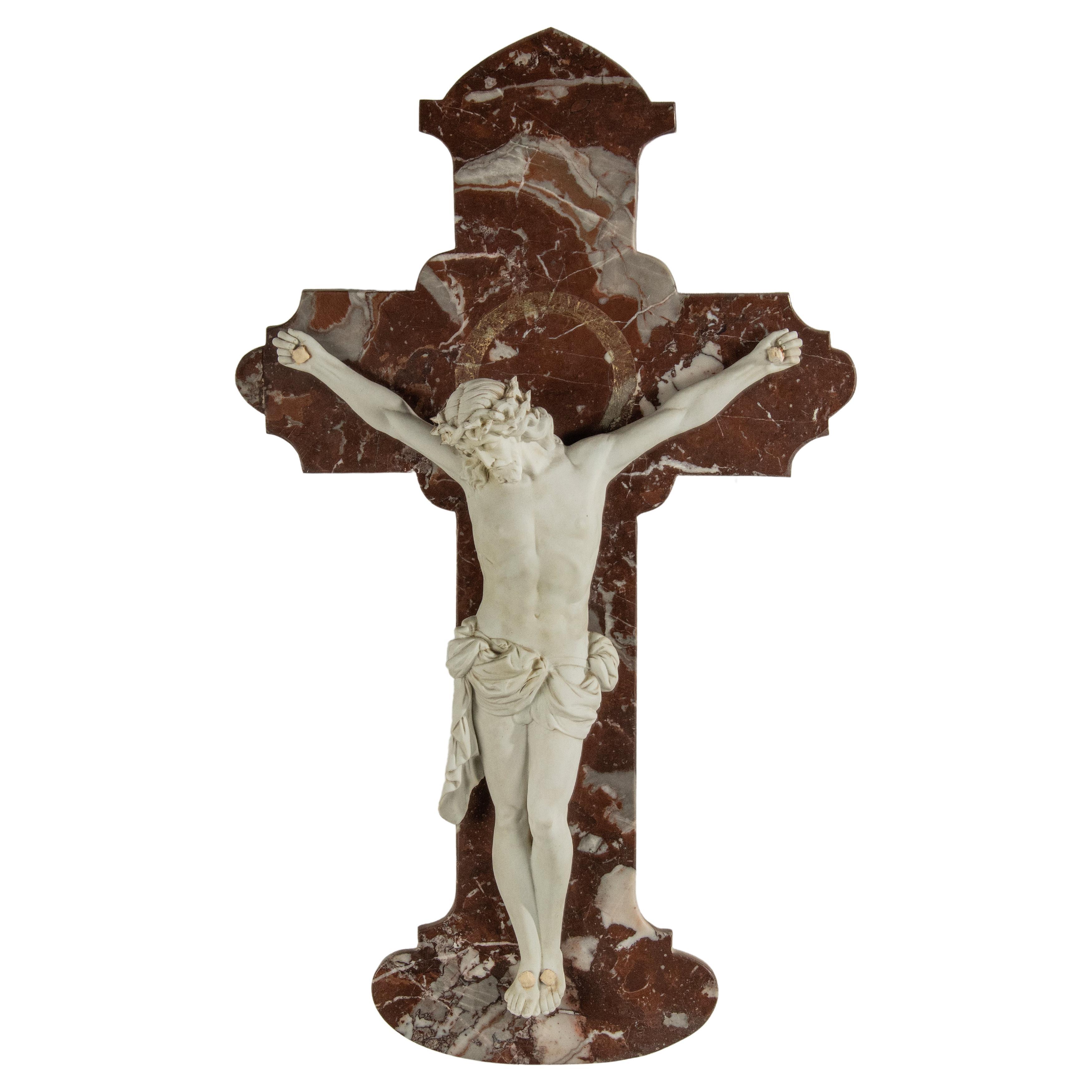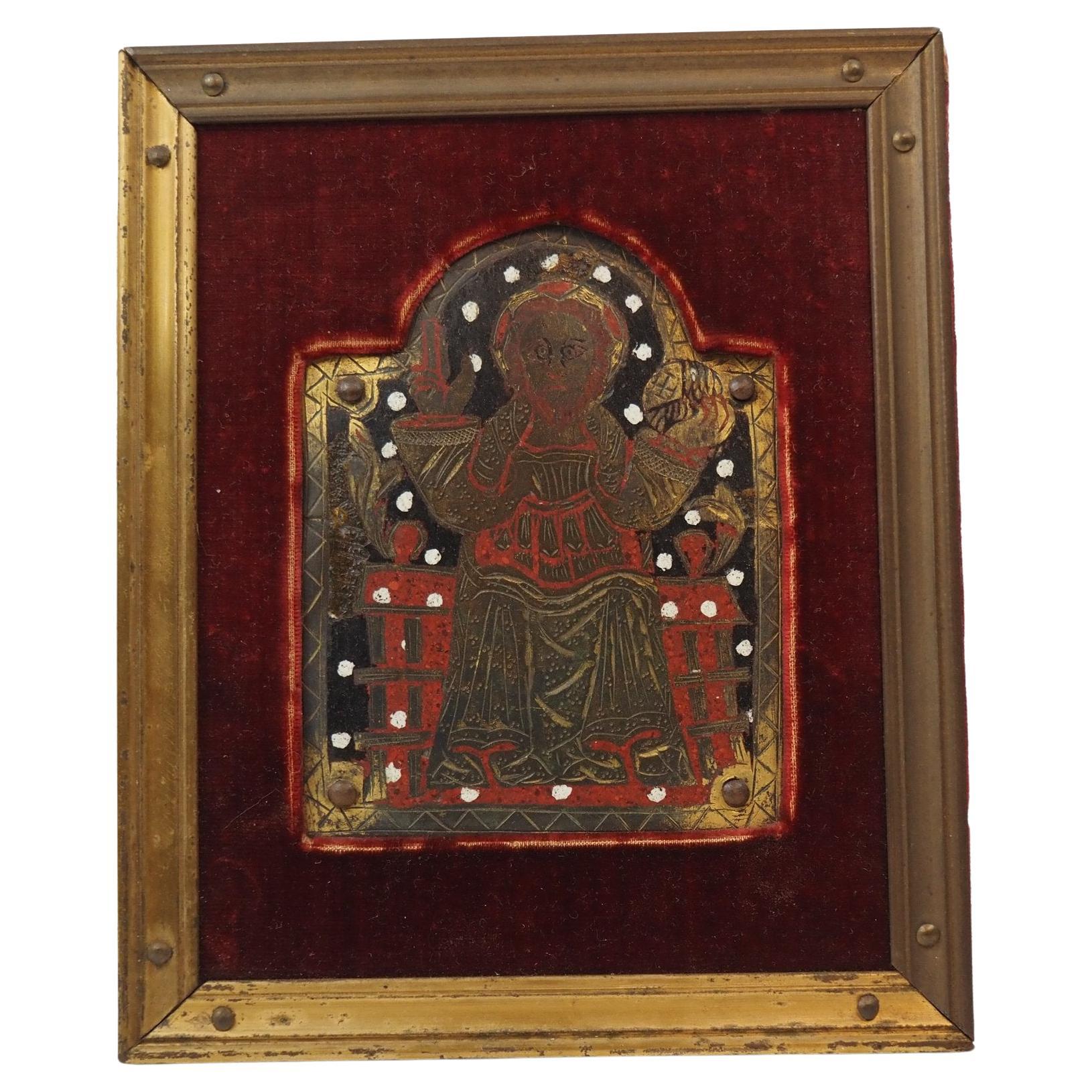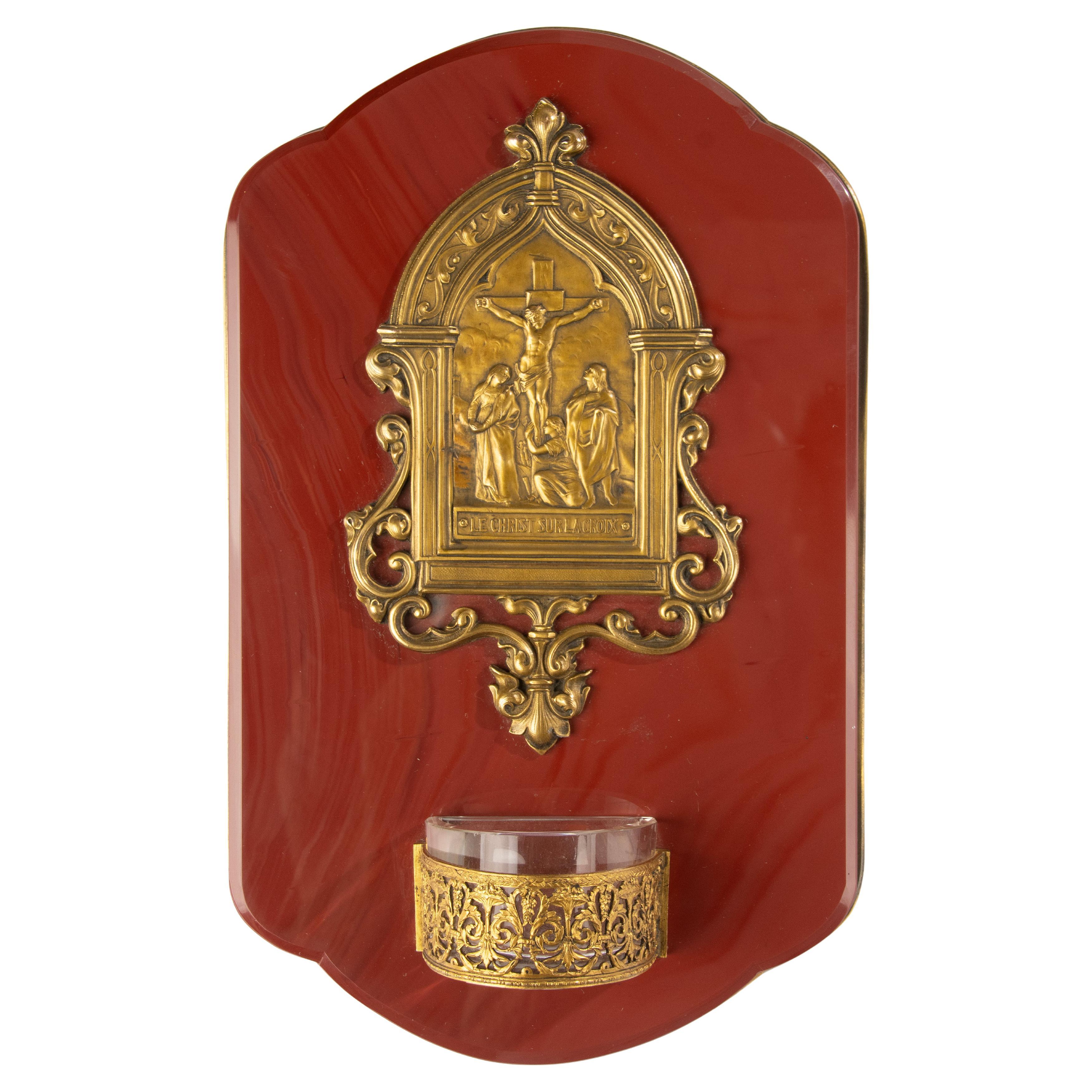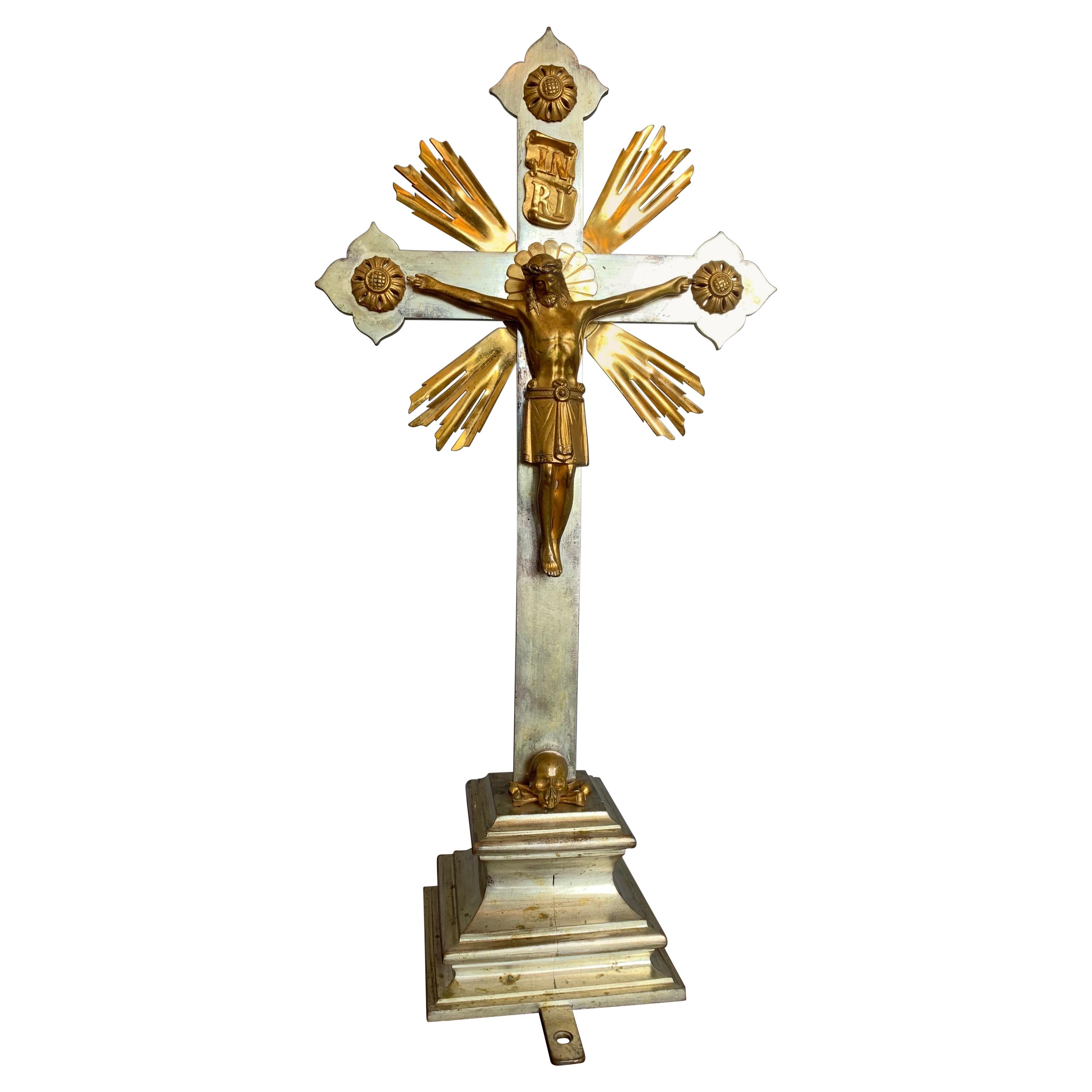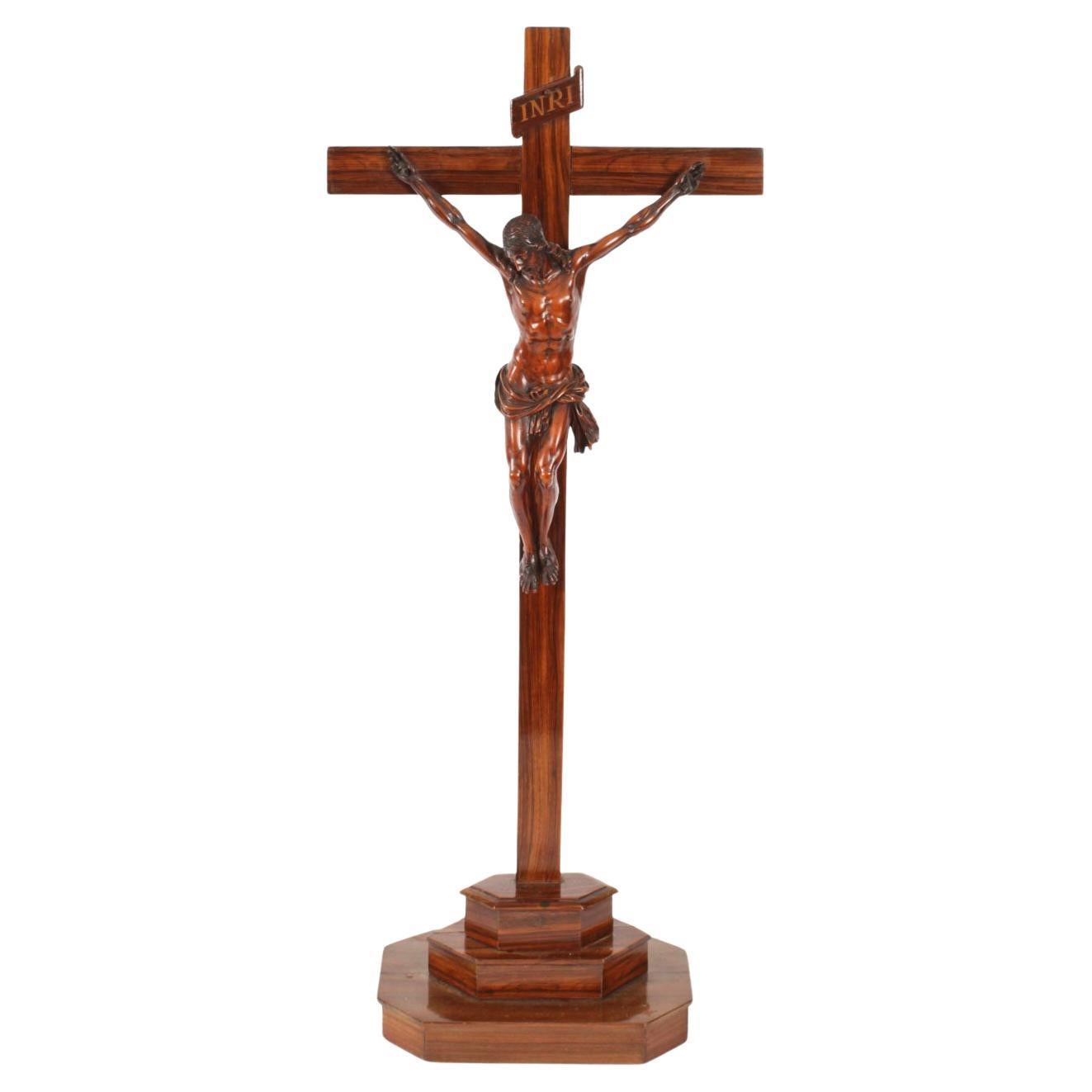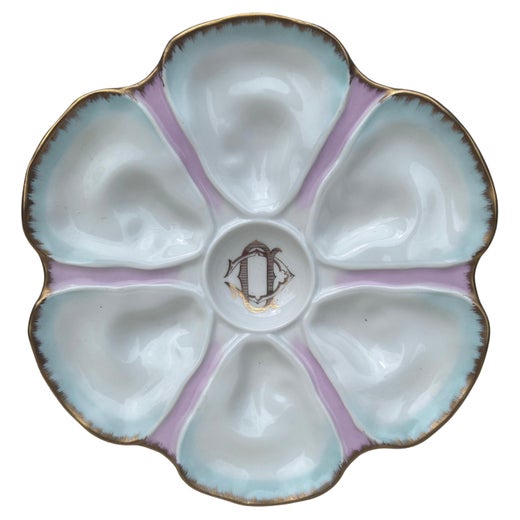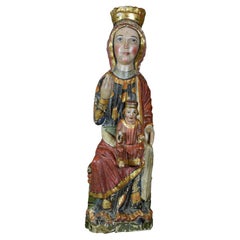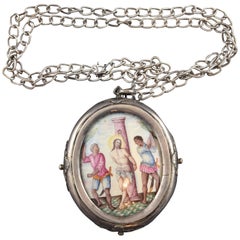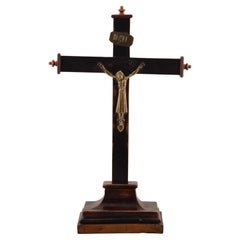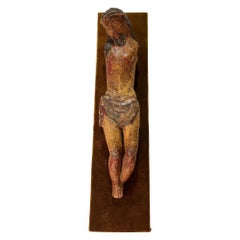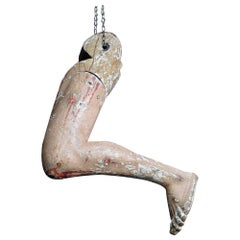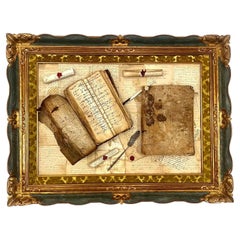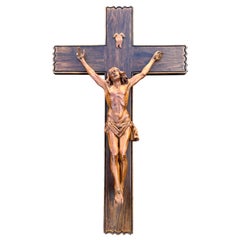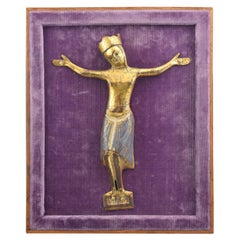
Christ 'Corpus Christi', Gilt Copper, Enamel, Jet 'Stone', Limoges, 13th Century
View Similar Items
Christ 'Corpus Christi', Gilt Copper, Enamel, Jet 'Stone', Limoges, 13th Century
About the Item
- Creator:Limoges (Manufacturer)
- Dimensions:Height: 9.06 in (23 cm)Width: 6.7 in (17 cm)Depth: 0.79 in (2 cm)
- Style:Gothic (Of the Period)
- Materials and Techniques:
- Place of Origin:
- Period:
- Date of Manufacture:13th Century
- Condition:Wear consistent with age and use. Minor losses. Minor structural damages. Minor fading.
- Seller Location:Madrid, ES
- Reference Number:Seller: ZF03601stDibs: LU2951312790452
Limoges
Limoges porcelain has withstood the test of time for centuries. The widely cherished ceramics named for the French city and commune in which they are made are synonymous with sophistication, elegance and refinement. Today, antique Limoges dinnerware, serveware, decorative objects and other porcelain products are coveted and collected all over the world.
The story of Limoges porcelain, which refers to porcelain made in the Limoges region of France — not by a specific factory — begins in 1768. The region is a rich source of kaolin, feldspar and quartz — vital ingredients to the production of this type of pottery.
Porcelain was first made in China and spread all over the world owing to the trade routes to the Far East established by Dutch and Portuguese merchants. Given its origin, English speakers called porcelain “fine china,” an expression you still might hear today. "Fine" indeed — for over a thousand years, it has been a highly sought-after material. Meissen Porcelain (Staatliche Porzellan-Manufaktur Meissen), which was founded in the Electorate of Saxony (now Germany), is one of the preeminent porcelain factories in Europe and was the first to produce true porcelain outside of Asia.
Limoges porcelain refers to porcelain produced in and near the city of Limoges — it does not refer to a specific manufacturer — and it’s distinctive for its luminous hue and bright white qualities, providing an ideal canvas for intricately detailed hand-painted decorations. (Revered Impressionist painter Pierre-Auguste Renoir began his career painting plates in Limoges.)
It wasn’t long before Limoges porcelain captured the attention of King Louis XVI — the region’s first manufactory, established toward the close of the 18th century, was placed under the protection of the King’s brother, the Comte d’Artois. It was later purchased by the King and became Manufacture Royale de Limoges. The facility produced a variety of pieces, including delicate, gold-embellished trinket boxes, ornamental vessels, Rococo-style figurines and elaborate dinnerware service sets.
Following the end of the French Revolution in 1794, Limoges porcelain was no longer restricted, and the commercial porcelain industry ballooned.
By 1819, Limoges had four porcelain factories, and as demand for porcelain grew during the 19th century, the industry expanded in the French city. In 1853, American businessman David Haviland opened the Haviland & Co. factory in Limoges to export porcelain to the United States. The company produced several iconic serveware collections for many American presidents, including Abraham Lincoln, Ulysses S. Grant and Rutherford B. Hayes. Bernardaud opened in the early 1860s.
By 1900, Limoges had 35 factories, which employed close to 8,000 workers. In 1925, Limoges porcelain was shown at the International Exhibition of Modern Decorative and Industrial Arts — the design fair in Paris that brought global attention to the Art Deco style — where it garnered international acclaim.
During the 20th century, Limoges factories such as Bernardaud collaborated with a range of notable artists and designers, including Franz Bischoff, Joan Miró, Raymond Loewy, Alexander Calder and Julian Schnabel, to name a few.
Today, authentic Limoges porcelain tableware, vases and objets d’art continue to gain renown with collectors and design lovers all over the world.
Find an extensive collection of antique Limoges porcelain on 1stDibs.
More From This Seller
View AllAntique 15th Century and Earlier Spanish Gothic Religious Items
Other
Antique 16th Century European Renaissance Religious Items
Silver, Enamel, Other
Antique 18th Century Spanish Neoclassical Religious Items
Other
Antique 19th Century Spanish Other Religious Items
Metal
Antique 19th Century European Neoclassical Scientific Instruments
Copper, Iron
Antique 15th Century and Earlier European Gothic Scientific Instruments
Bronze
You May Also Like
Antique 15th Century and Earlier Unknown Medieval Religious Items
Hardwood, Paint
Antique 1850s Spanish Early Victorian Religious Items
Oak, Paint
Antique 15th Century and Earlier French Gothic Historical Memorabilia
Gold, Silver
Antique Early 19th Century German Gothic Religious Items
Fruitwood, Oak
Antique Late 19th Century Belgian Gothic Figurative Sculptures
Wood
Antique 16th Century French Religious Items
Copper, Enamel
